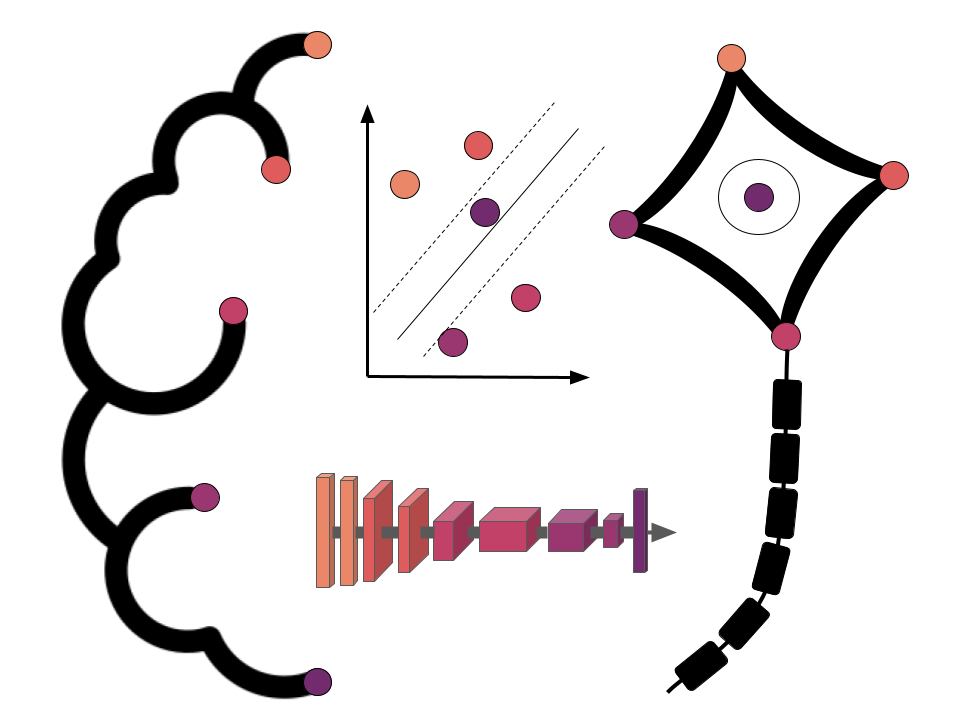Machine learning¶
After getting to know the rough outline of machine learning analyses and defining important concepts therein, it’s time to dive deeper into respectively crucial components. Especially after our rather horrific example.
As you’ve already seen in the outline this part of the workshop is divided into three sections within which we will spend a little more time on central parts of a given machine learning analysis pipeline. To keep it as real as possible, we’ll continue to use the example dataset we just checked and explore some others, real and toy, here and there. We’ll also continue to have slides where information is mixed with interactive code and graphics. Our intention with this setup is to enable you to directly play around with the things we’ve talked about and hopefully increase knowledge transfer. However, if that doesn’t work for you, please let us know and we’ll try our best to adapt accordingly.
We said it many times before: we only have 1 1/2 h for each part and thus unfortunately cannot present a very in-depth overview, nor go through every possible detail. Instead we will focus on the points necessary to (hopefully) obtain a good understanding of these methods and (critically) evaluate them. Consider this a starting point from which you will dive further into the nitty-gritty things rather than a “full course after which you are an immediate expert”. But don’t worry, there’s of course the hands-on session during which we will have a look on your dataset and what might be possible with machine learning.
The content of this section is based on the terminology and rough analysis outline talked about in the previous section, going from broader to more precise topics:
Time slot |
Topic |
|---|---|
9:30 AM - 10 AM |
“Classic” machine learning - supervised or unsupervised, model types |
10 AM - 10:15 AM |
yoga/dance break |
10:15 AM - 10:45 AM |
“Classic” machine learning - model evaluation & cross-validation |
10:45 AM - 11:15 AM |
“Classic” machine learning - model tuning & biases |
